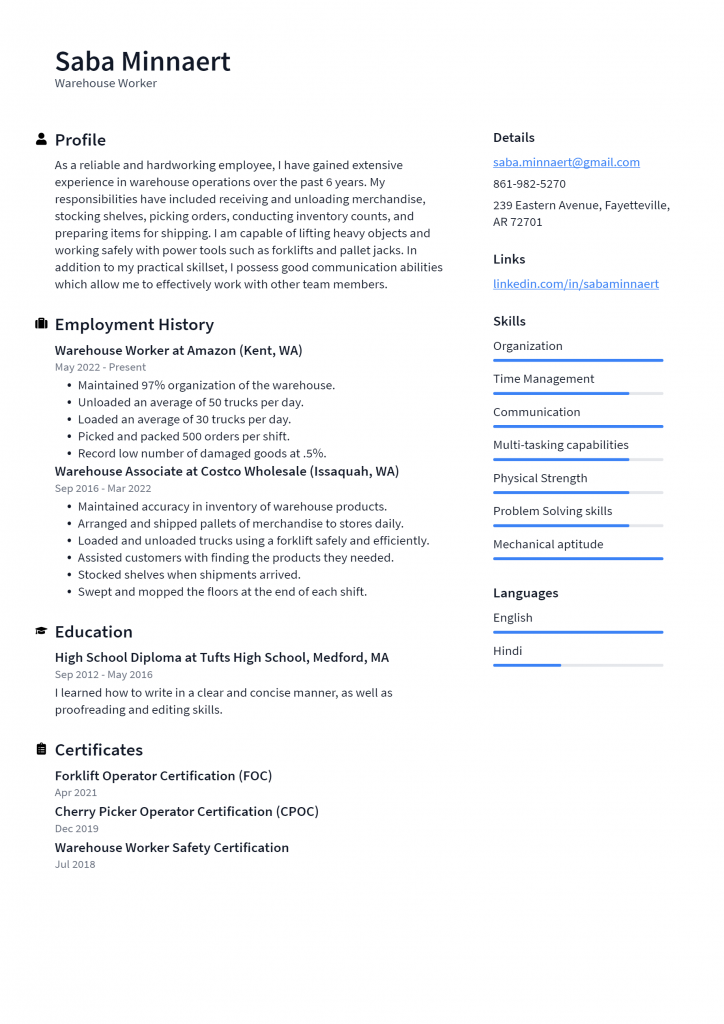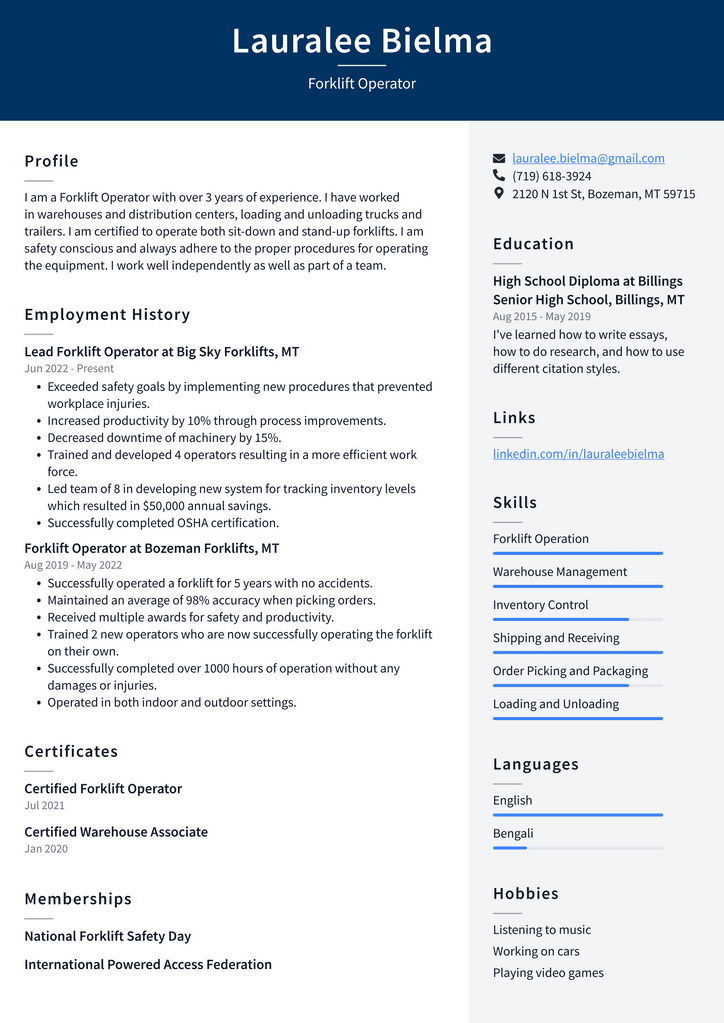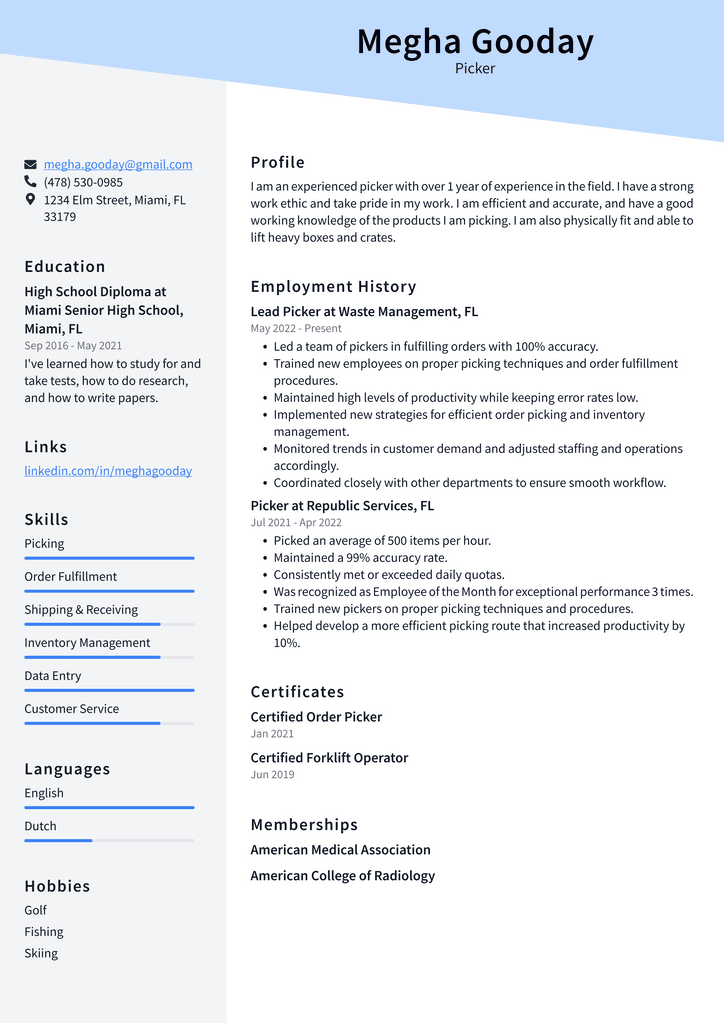In the fast-paced, digital age of logistics, candidates must be able to adapt quickly and effectively to stand out from the crowd. To make a lasting impression on hiring managers, job seekers must think outside the box and tailor their resumes accordingly. A warehouse worker’s resume is one of the first things a hiring manager sees when reading through potential applicants for an open position. Therefore, it’s essential that your resume conveys why you are qualified for the job and stands out among other applicants. A well-written warehouse worker resume will help you stand out among other candidates while showcasing your skills and experience in a way that makes you seem like an ideal candidate for the position. Resume tips for warehouse workers vary depending on your education level, work history, and other unique attributes or skills relevant to this type of role. Read on to learn more about creating an effective warehouse worker resume that will set you above other applicants in this industry.
Warehouse Worker Resume Example

Download This Warehouse Worker Resume as PDF
Packer Resume Example

Download This Packer Resume as PDF
Loader Resume Example

Download This Loader Resume as PDF
Unloader Resume Example

Download This Unloader Resume as PDF
Inventory Specialist Resume Example

Download This Inventory Specialist Resume as PDF
Forklift Operator Resume Example

Download This Forklift Operator Resume as PDF
Picker Resume Example

Download This Picker Resume as PDF
What to Include in a Warehouse Worker Resume
When creating your warehouse worker resume, it’s essential to ensure it includes all the necessary information to communicate your skills and experience. The best way to do this is to follow a standard resume format. Here are some key elements to include: – Your name and contact information – Make sure to include your name, address, phone number, and email address. – Work experience – The bulk of your resume should be dedicated to your work experience. Include all of your previous roles, including details such as the company name, job title, and dates of employment. – Education and training – Include any formal education and training relevant to your desired field. – Skills and specialties – Mention any special skills or expertise related to your line of work, such as language fluency, computer programming skills, or first aid certification. You can also include relevant hobbies, interests, and volunteer work to help round out your resume and show hiring managers a different side of yourself.
Basics of a Resume
Before diving into the details of how to write a warehouse worker resume, it’s essential first to understand the basics of a summary and how it functions in the hiring process. An overview is a document that summarizes your work history, education, and other qualifications for a job. It is used by both employers and job seekers, though job seekers often also refer to it as a “curriculum vitae” or CV. A resume works by providing a snapshot of your career, education, and other experience that makes hiring managers quickly see why you’re a good fit for the job. When a resume is submitted to an employer, it is typically reviewed alongside other applicants’ resumes to determine who will be invited to interview.
Skills To Include
As a warehouse worker, you have likely worked in several different capacities, so you have a wide range of skills and experiences to draw from when creating your resume. To help you decide what to include, here are some commonly used categories and their definitions: – Education – This is where you list any degrees and credits earned, relevant coursework, and certificates or licenses. – Experience – This is where you list your work history, including job titles, companies, and dates worked. – Skills are specific abilities you possess, such as computer programming skills, first aid certification, or proficiency in a foreign language. – Honors and awards – Include any special awards or recognitions you’ve received in the past. – Personal attributes – If you want to include anything more personal, such as a particular skill or characteristic unrelated to work, this is where you would list it. For example, you could list that here if you are fluent in multiple languages.
Education and Certification Information
High-quality education is a must-have for many entry-level warehouse worker positions in today’s digital economy. If you have earned a degree or credits related to the field, include that information in your resume. In addition, if you have received relevant certifications related to your area, such as a forklift operator license, be sure to include that on your resume. Because these certifications show employers that you have passed a certain standard of training, listing them on your resume could help you stand out among other applicants.
Professional Experience
Most of the space on your resume should be dedicated to listing your professional experience. Begin by listing each job in reverse chronological order, starting with your most recent role. Include the name of the company you worked for, your job title, and the city and state where you worked. Next, include the start and end dates and a sentence or two describing your work there for your most recent job. This can help hire managers quickly scan your resume and see that you have recent experience in the field. For example, if you are applying for an entry-level warehouse worker job, you should list all previous jobs, even if they are unrelated to warehouse work. This shows hiring managers that you have a varied work history and have remained employed throughout your career.
Conclusion
While the details of writing a warehouse worker resume may vary from industry to industry, the common theme is conveying your skills and experience clearly and concisely. After reading this article, you now know what to include on a warehouse worker’s resume and how to format your resume to make sure it gets noticed. With these tips in mind, you can confidently create an effective warehouse worker resume and ensure hiring managers remember your name while viewing applications.